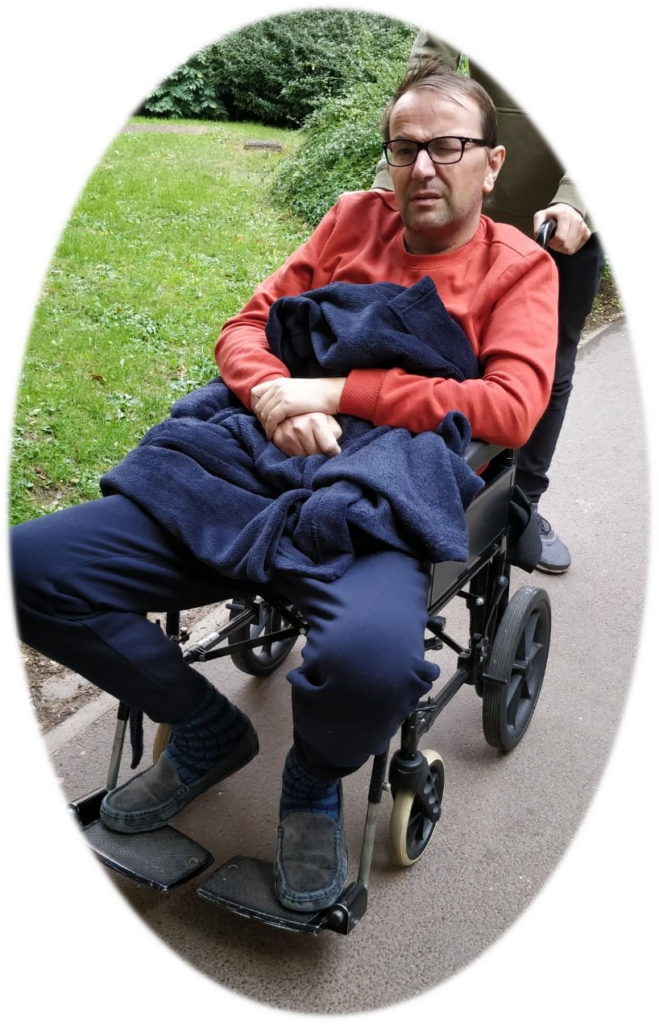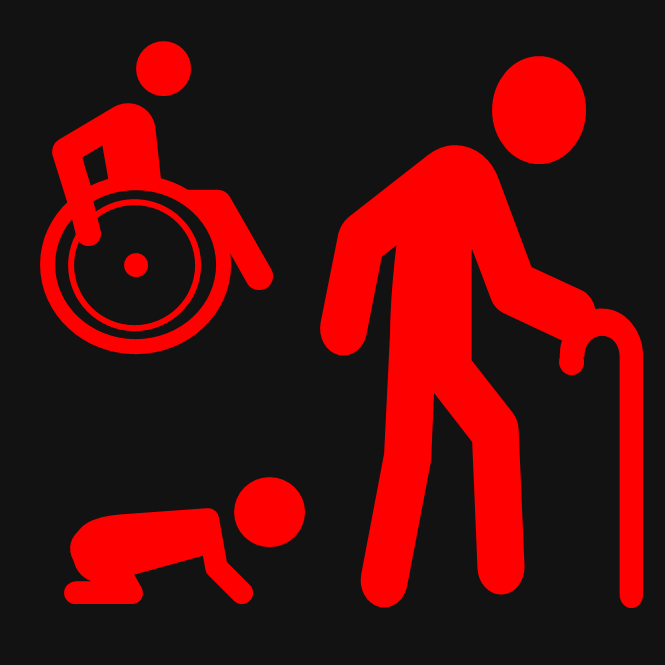Seeing is believing? (8/22)

An estimated 14 million (20%) of people in the UK have disability. Approximately 10 million (72%) of these are invisible.
It will always be impossible to know the exact number of those suffering with disability, due to definition, discovery, and disclosure issues.
Disability
The Equality Act 2010 section 6 describes disability as, “a physical or mental impairment… the impairment has a substantial and long-term adverse effect on ability to carry out normal day-to-day activities.”

I have been told, post-accident, that ongoing experiential awareness of my reduced capacity will be difficult to live with. It is.
I no longer have a visible hospital wheelchair, and my damaged vision never required a white stick. I’ve also avoided a hearing aid offered following accident damage to my left ear.
Physically I now look healthy. Others fare less well.
Invisibility
I have been told it will be tough when those looking at me think I’m fine, unaware of my difficulties, because my ongoing issues are invisible. There are no reasonable adjustments. Where do I fit in?
The Disabled Persons Transport Advisory Committee (DPTAC), have an excellent position statement on non-visible disabilities.
Their vision is that disabled people should have the same access as anyone else. More thoughts on disability and equality for all are here.
Their disabilities list includes my traumatic brain injury (TBI) and diabetes.
I now have diabetes insipidus caused by accident damage to a hormone controlling gland in my head. My diabetes (siphon/pour) is not the same thing as diabetes mellitus with the sugar level control more people know about.
Anxiety and depression are included too. The BBC recently reported that 8.3 million (13%) of people in the UK, like me, received antidepressants in 2021-22.
Invisible Disabilities are diverse, and any list will unfortunately exclude someone.
DPTAC use the label non-visible rather than; invisible, less visible, or hidden. Their reasoning…
Hidden implies they are being purposefully hidden, invisible implies it’s in a person’s head and does not really exist, and less visible implies that the disability is partially visible.
My brain injury is not externally visible at all, but the damage is clear in a Magnetic Resonance Imaging (MRI) brain scan. Disabilities are real, seen or unseen.
Some disabilities can’t even be seen with medical kit.
My post-accident epilepsy diagnosis could not be confirmed by medical investigation.
I had an electroencephalogram (EEG) test for photosensitive epilepsy. No seizure provoked. I got an Epilepsy diagnosis nonetheless, due to a 70% likelihood following TBI. I now need to take special care, and more medication.
According to epilepsy action, “if you have epilepsy in England, Scotland or Wales, you are likely to be classed as disabled under the Equality Act.”
We can become unaware of invisible air when it is available, still, or just breezy. A hurricane can blow us away. No air is suffocating.
Invisible temperature has impact, both seen and felt.
All disabilities can have a significant influence on lifestyle. We are all equal people valued by God, irrespective of life’s challenges. Yet more reflection on equality, diversity, discrimination and U3A here.
Disabilities can promote excruciating, even life threatening, experiences. Visible or invisible. There are invisible abilities too.
Visit this BBC website, or YouTube link, for a video, with someone describing what it is like to live with their invisible disability. Invisible disability information is also on this Wikipedia link.
Invisible Scripture
“For since the creation of the world God’s invisible qualities– his eternal power and divine nature– have been clearly seen, being understood from what has been made, so that men are without excuse.” (Romans 1:20)
Sometimes we need to look closely, and more broadly, at evidence, symptoms, and behaviours to perceive and more fully understand their meaning.
We may need to observe carefully to note the unsaid as well as the said. The seen and unseen.
We can read between the lines…
We often focus on big memorable and noteworthy events, such as Paul’s blinding conversion on the road to Damascus.
We read of his faithful, successful missions, and see wisdom in his many letters in our New Testament.
Less visible moments?
Paul was back in his hometown of Tarsus for about 7 years before Barnabas, the encouraging successful man of mission, came for him. (A recent Lectio 365 reminder.)
We do not know if this time at home was frenetic or fruitful, but perhaps it was an essential preparation period, building relationship with God prior to amazing service in His name.
This is helpful as I find myself less than well deployed post-accident. It’s not just a frustrating waste of time.
Conclusion
Vital, but less visible information, is often there to be “seen” by those seeking sensitively and with care.
We may reply, “I see” to an explanation, proclaiming we understand. Sight and vision for the future, requires more than sensitivity to light.
Seeing and perceiving,
facilitate believing.
Our invisible God is in my head, because He is omnipresent, and does really exist, everywhere. Surrounding evidence can be seen by all. There are no excuses.
Evidence? Creation, heroes of faith, selfless often hidden acts by millions of Christians over centuries, His presence in daily lives, answers to prayer over time… Father, Spirit and Son, seen and unseen.
There is sin in all, including Christians, but His loving response, always awaits our response, to this evidencial awareness.
An insightful post?


